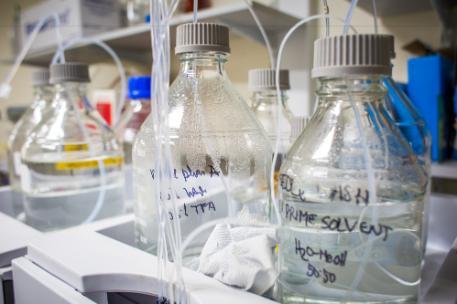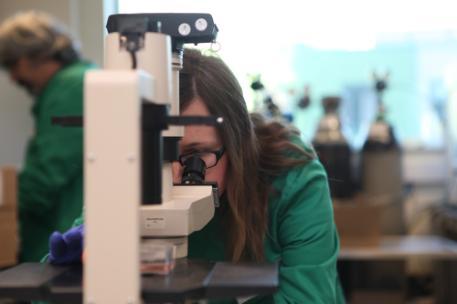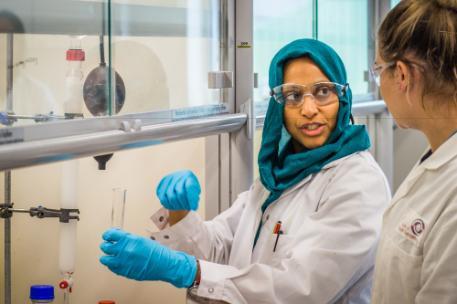Institute of Cancer Therapeutics
The Institute of Cancer Therapeutics (ICT) is a multidisciplinary team of researchers at the University of Bradford working together to research, develop and commercialise new cancer treatments.
We are one of only a few centres in the UK with the research tools and expertise in-house to progress anticancer medicines and biomarkers from concept to clinic.
Welcome from the Director
I welcome you to the Institute of Cancer Therapeutics (ICT), the home of multidisciplinary teams working together to make fundamental discoveries and take them to the clinic.
Early diagnosis and personalised healthcare are the future to winning the battle against human disease including cancer. At the ICT, we fuse genetics, cell biology, medicinal chemistry and pharmacology to take medicines and diagnostics from concept to clinic.
The ICT is world-renowned for research, training and partnership with industry. We are located in a purpose-built building carrying over 30 years’ experience in drug discovery, pharmacology, metabolite profiling and pharmacokinetics. We work closely with Stanford, Harvard, Oxford, Cambridge, the University of Sheffield, the Bradford Royal Infirmary, St James Hospital and the Royal Hallamshire.

Professor Sherif El-Khamisy, Professor of Molecular Medicine, Director of the Institute of Cancer Therapeutics and of Ethical Tissue Biobank
Contact the Institute of Cancer Therapeutics
The Institute of Cancer Therapeutics are happy to answer all general enquiries, business enquiries, discuss research, or training needs.
Whether you are a commercial organisation looking for a high-quality service, a student seeking top-notch training or a scientist wishing to be embedded in a stimulating and nurturing environment - we look forward to working with you.
Professor Sherif El-Khamisy, Director of the Institute of Cancer Therapeutics
Networks and Partners
The Institute of Cancer Therapeutics has many research collaborations and industry partnerships that span all our research capabilities. Some of our leading partnerships are outlined below:
- Yorkshire Cancer Research (Programme grant)
- Cancer Research UK (Funding)
- Prostate Cancer UK (Funding)
- RCUK Science Bridges China (Founding Partner)
- Neuroblastoma Society (Funding)
- St James's University Hospital, Leeds NICR/CRUK funded Experimental Cancer Medicines Centre (Partner)
- EPSRC (Funding)
- Bradford Teaching Hospitals Foundation Trust (PhD Studentship)
- University of Leeds (Collaborative research)
- Ethical Tissue (Spin-out)
- Incanthera (Spin-out)
Meet the academic team
Meet the business team
Getting in touch with the Institute of Cancer Therapeutics
- General Enquiries: jayne.marshall@bradford.ac.uk
- Postgraduate Training: H.S.Jones@bradford.ac.uk
- Postgraduate Research: S.D.Shnyder@bradford.ac.uk
- Business Enquiries: Jason Jones
Our address is:
Institute of Cancer Therapeutics
University of Bradford
Richmond Road
Bradford
West Yorkshire
United Kingdom
BD7 1DP




